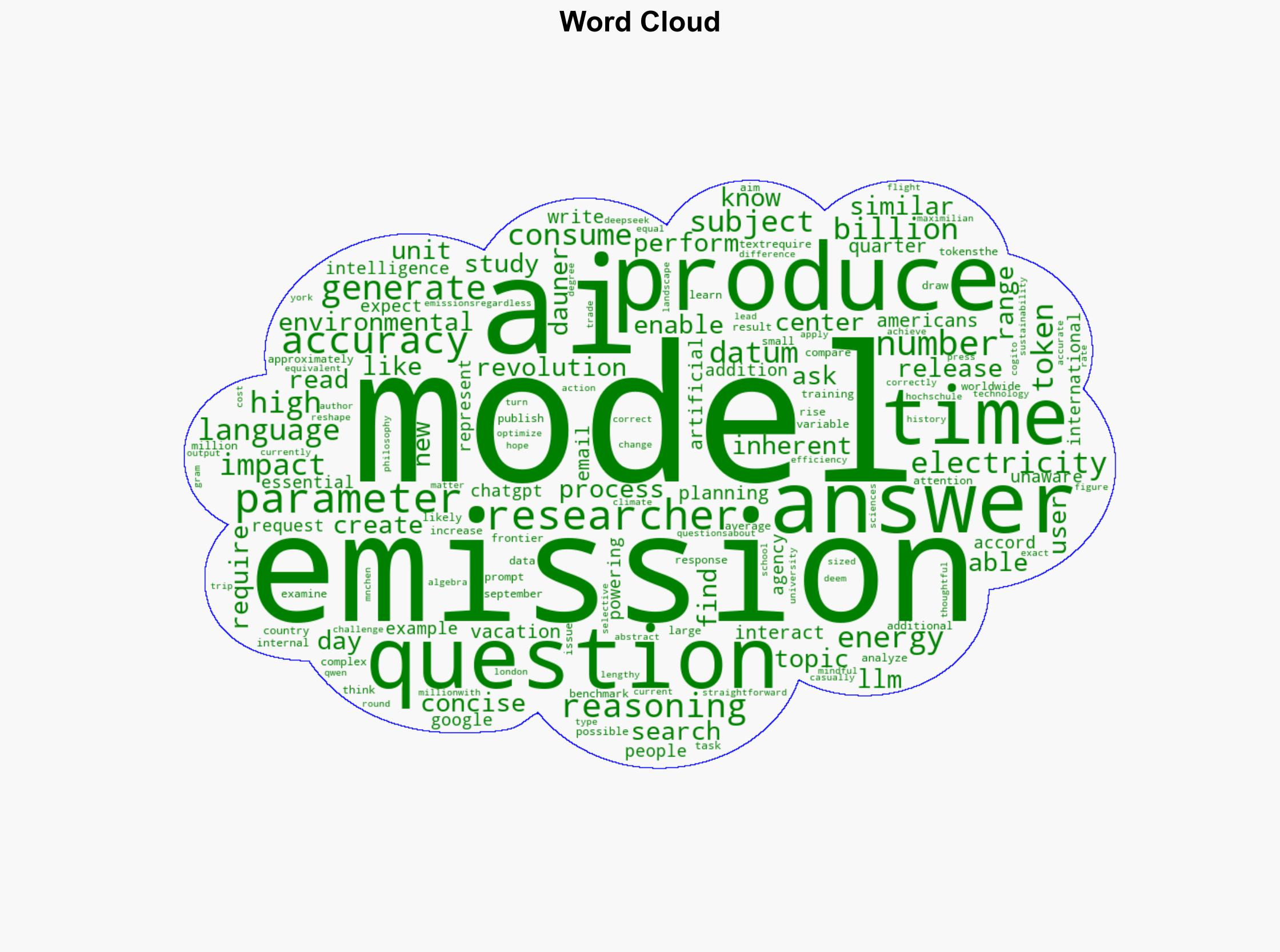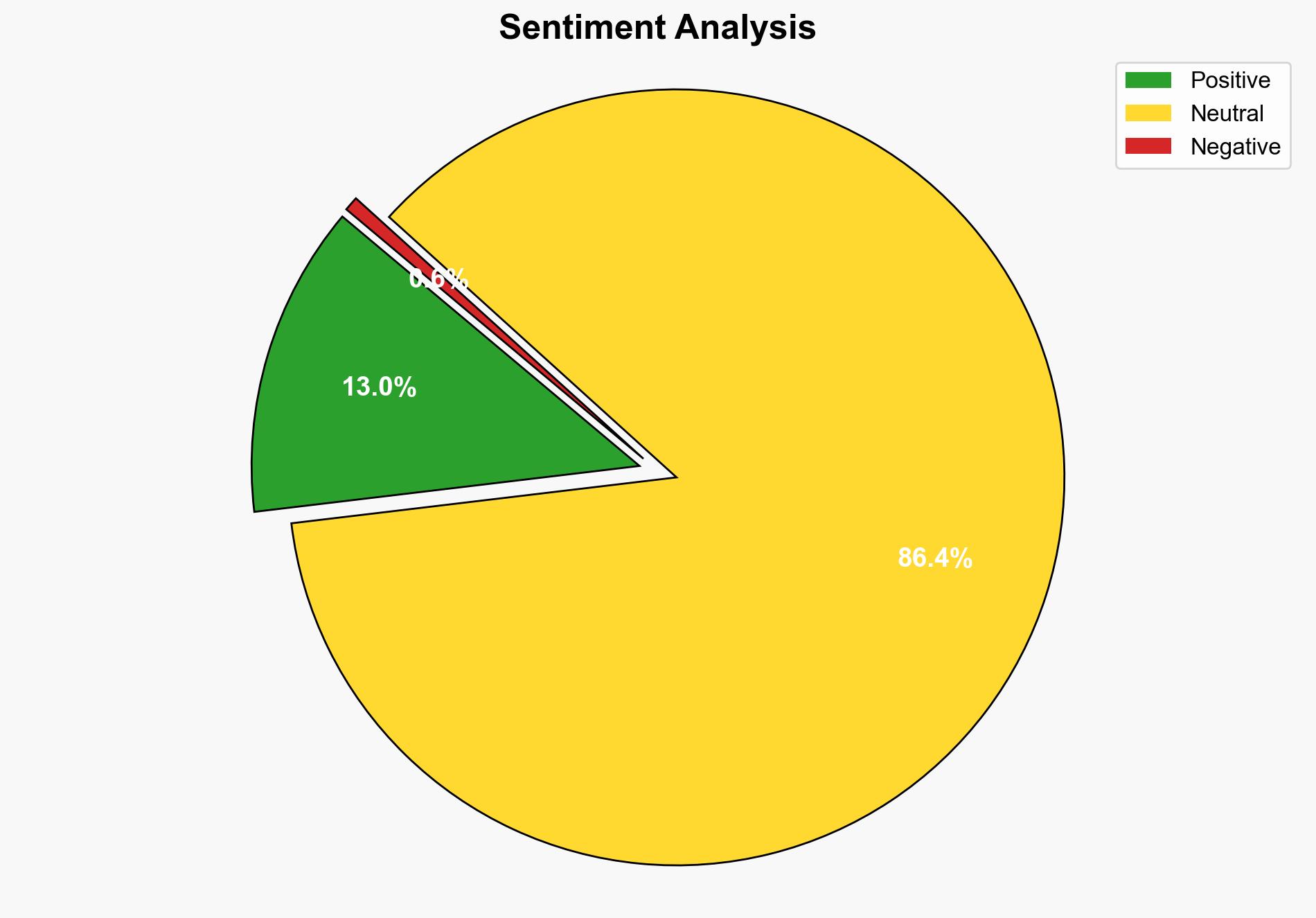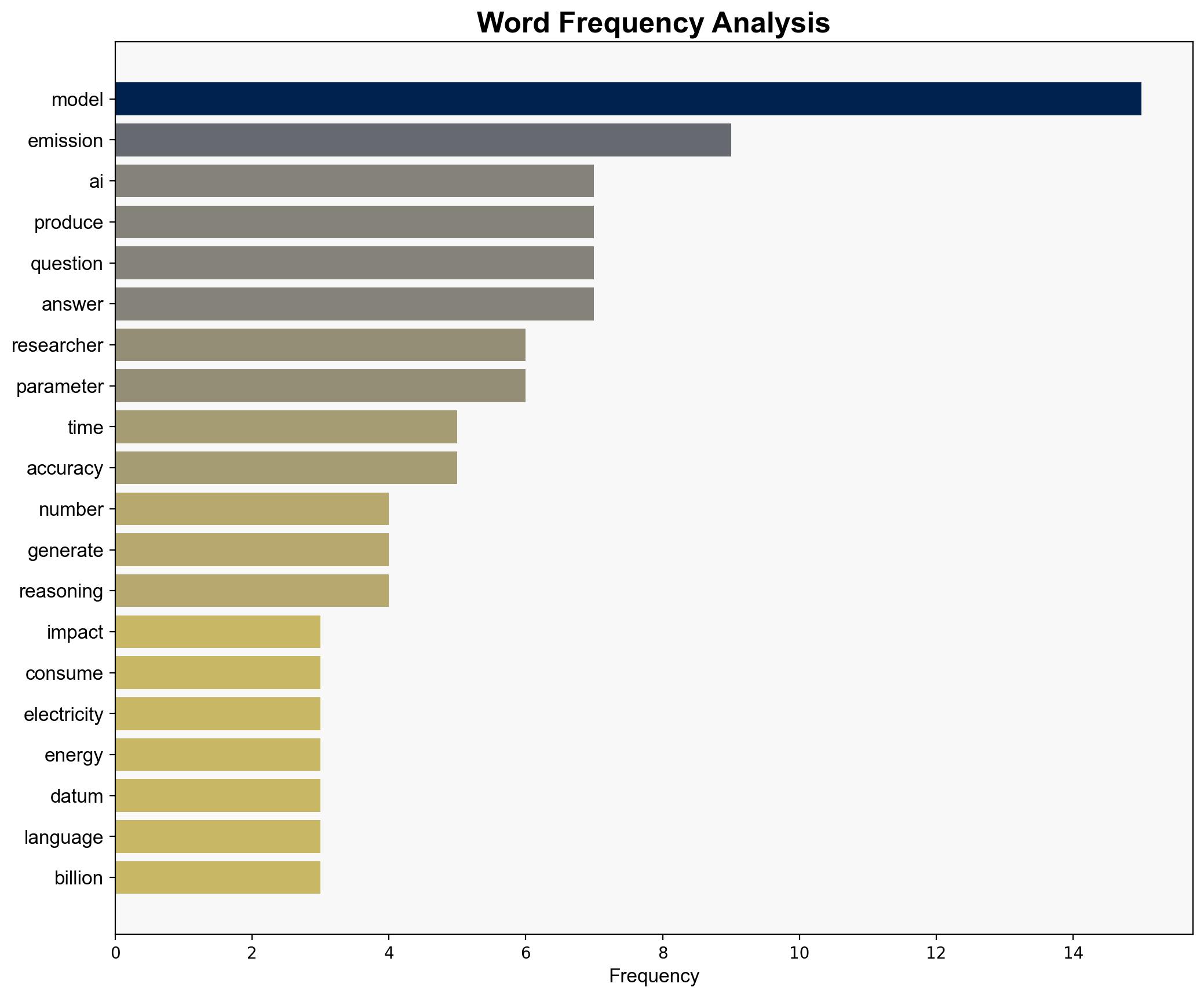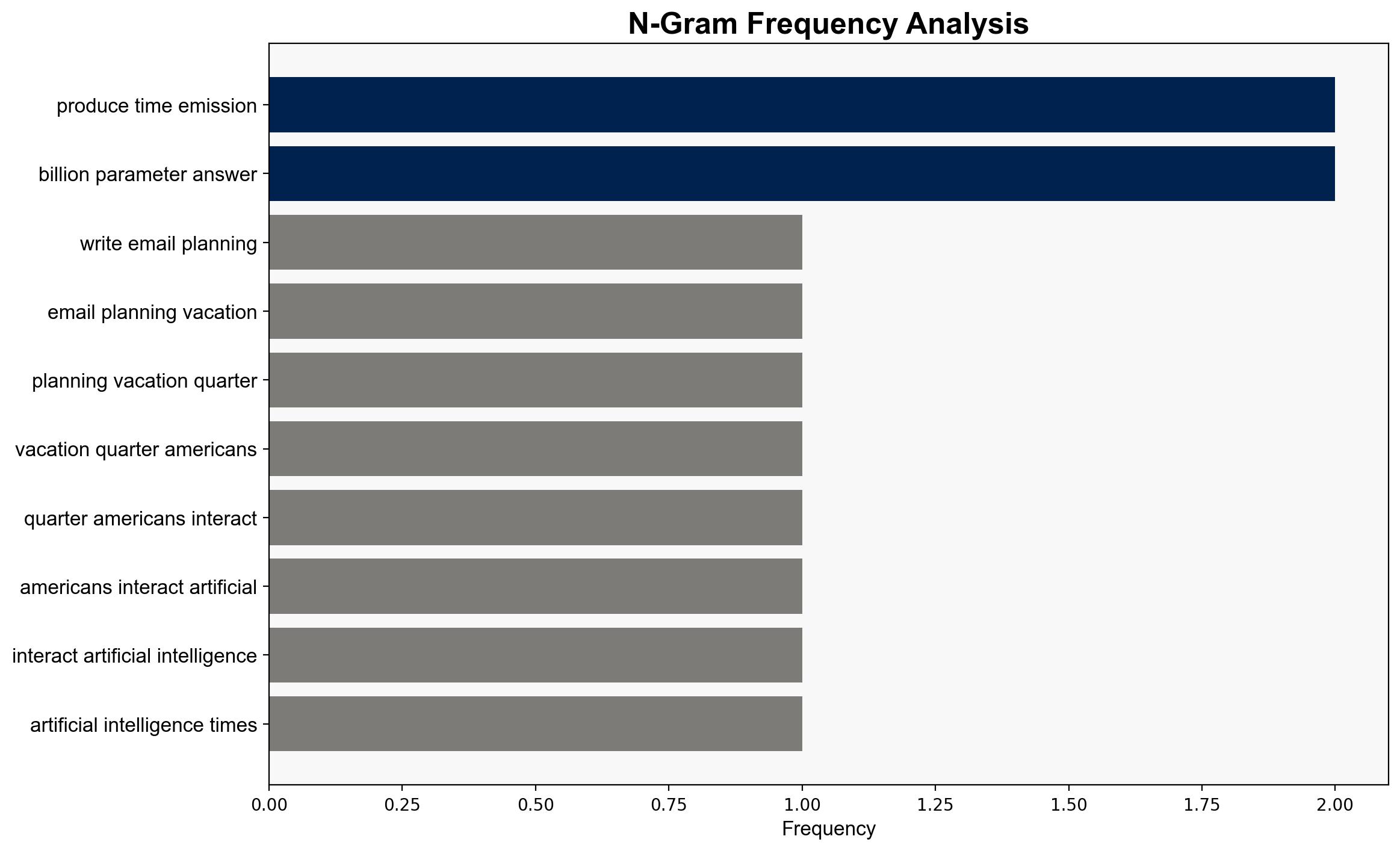Some AI Prompts Can Cause 50 Times More CO2 Emissions Than Others – Time
Published on: 2025-06-19
Intelligence Report: Some AI Prompts Can Cause 50 Times More CO2 Emissions Than Others – Time
1. BLUF (Bottom Line Up Front)
Recent studies indicate that certain AI prompts can result in significantly higher CO2 emissions compared to others, with some generating up to 50 times more emissions. This discrepancy is primarily due to the varying computational demands of different AI models and tasks. The environmental impact of AI usage is becoming increasingly significant as data centers, which power AI models, are expected to consume more electricity, potentially equating to the consumption of entire countries. Strategic recommendations include optimizing AI model efficiency and increasing awareness of the environmental costs associated with AI usage.
2. Detailed Analysis
The following structured analytic techniques have been applied to ensure methodological consistency:
Adversarial Threat Simulation
While not directly related to AI emissions, understanding adversarial threats can help in securing AI systems against misuse that could exacerbate energy consumption.
Indicators Development
Monitoring AI usage patterns can help identify high-emission activities, allowing for targeted interventions to reduce environmental impact.
Bayesian Scenario Modeling
Utilizing probabilistic models to predict AI usage trends can aid in planning for future energy demands and emissions.
3. Implications and Strategic Risks
The increasing energy demands of AI models pose significant environmental risks, potentially exacerbating climate change. As AI technology continues to evolve, the disparity in emissions between different models and tasks could lead to regulatory challenges and increased scrutiny from environmental agencies. Additionally, the reliance on data centers could create vulnerabilities in energy supply chains, impacting national security.
4. Recommendations and Outlook
- Encourage the development and deployment of energy-efficient AI models to minimize environmental impact.
- Promote awareness among AI users about the environmental costs of their actions to foster more sustainable usage patterns.
- Implement scenario-based planning to anticipate future energy demands and emissions, ensuring preparedness for various outcomes.
5. Key Individuals and Entities
Maximilian Dauner, a researcher involved in the study, has highlighted the need for increased awareness and selective use of AI technologies to mitigate environmental impacts.
6. Thematic Tags
environmental impact, AI technology, energy consumption, sustainability, data centers





